Microsystems Laboratory Facilities and Equipment
Members of the Microsystems Lab fabricate their devices in campus-wide Integrated Nanosystems Research Facility (INRF), a 10,000 sq.ft of class 100/1,000/10,000 cleanroom fabrication space.
Design, Modeling, and Characterization of microdevices is done in the Microsystems Lab. The lab is located in the Engineering Gateway Building (EG 2110), occupies 1,000 sq.ft space and has a small 100 sq.ft. area of class 1000 for post-processing, packaging, and chip-level diagnostics. The main function of the lab is design, modeling, and characterization of micro-devices. The following equipment is available for lab members and on fee-based arrangements for outside users.

NEXTRON Micro Optical Chamber
This specialized low volume (<30cc) and low profile (25mm) vacuum chamber features a wide window for optical measurements and can be equipped with temperature control and achieve pressures as low as 1e-5 Torr.
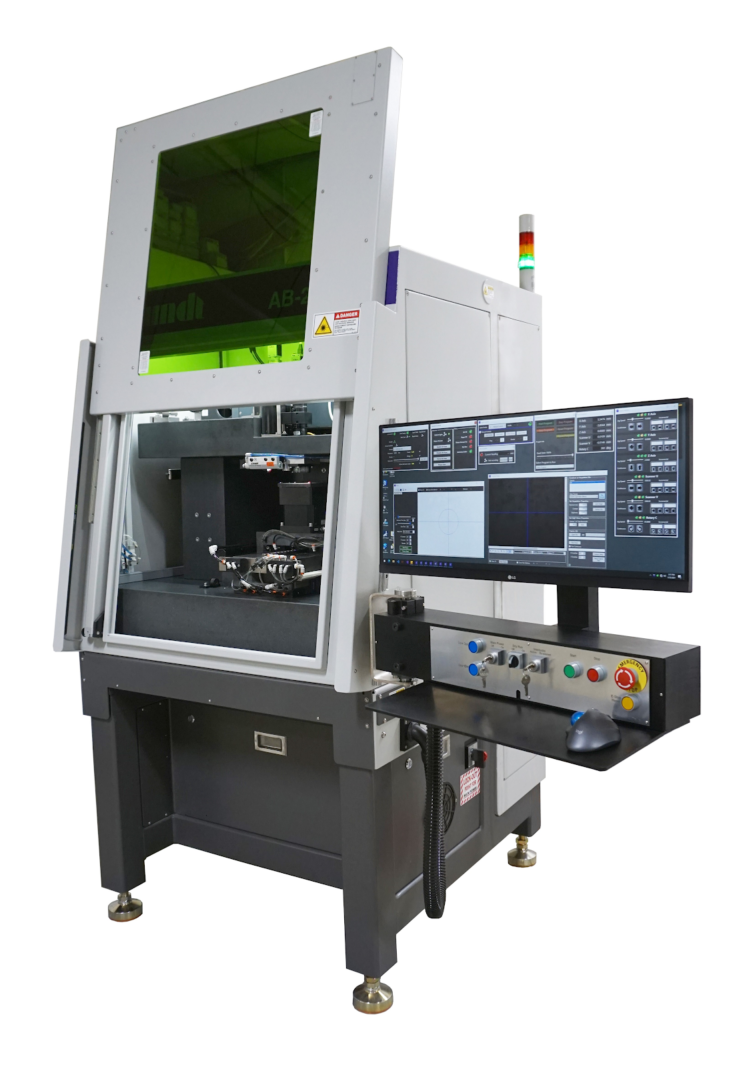
MUNDT AB-200150 5-Axis Laser Workstation
This custom-designed femtosecond laser station enables digital manufacturing of MEMS resonators through Femtosecond Laser-Induced Chemical Etching (FLICE). It is comprised of a 1030 nm wavelength CARBIDE femtosecond laser source (Light Conversion Inc.), sub-micron accuracy air bearing cartesian XYZ stages, a servo-controlled half-wave plate linear polarizer, and a Mitutoyo 50X magnification lens.
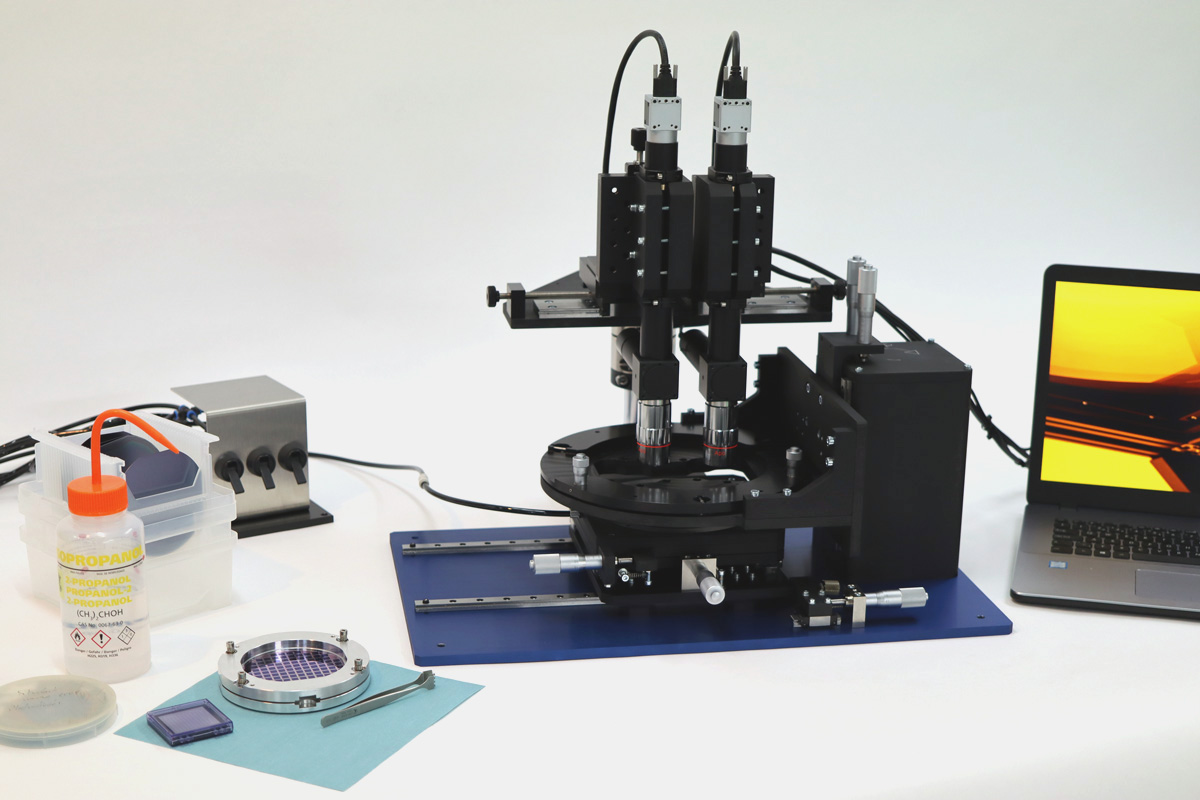
MAS+DIM Shadowmask Aligner
The mask aligner is designed to accurately align masks with substrates. Using for example a shadow mask permits to do a lithography free thin film deposition. Once the wafer aligned under the mask the two substrates will be clamped in a double chuck. The clamped double chuck with substrates can then be inserted in PVD chamber for evaporation. After the deposition the double chuck will be separated and the substrates can be taken out.
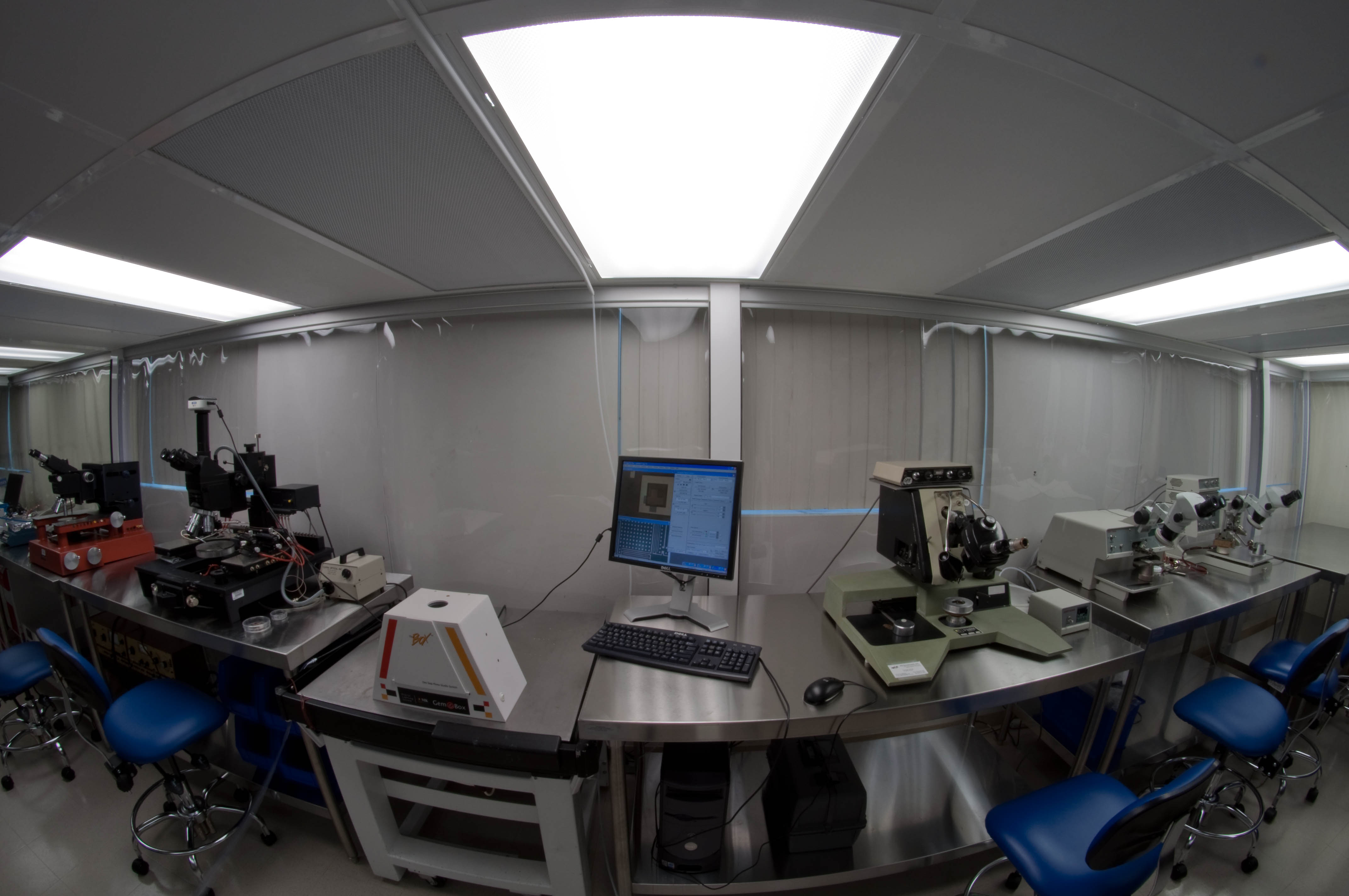
Cleanroom Space
Over 200 square feet of dedicated cleanroom space for device fabrication and testing equipment. Current houses two probe stations, a UniTemp Vacuum Furnace, a WestBond Epoxy Die Bonders, two wirebonders and additional miscellaneous equipment.
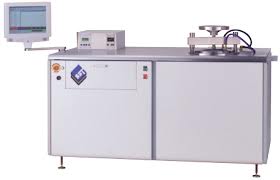
High Vacuum Packaging System
Model 3150 High Vacuum Furnace by SST International is used for high-reliability microelectronic package assembly. Packages are hermetically sealed with very low internal gas pressures and moisture levels. Prior to package sealing, integral getters may also be activated to ensure long-term internal package vacuum levels.
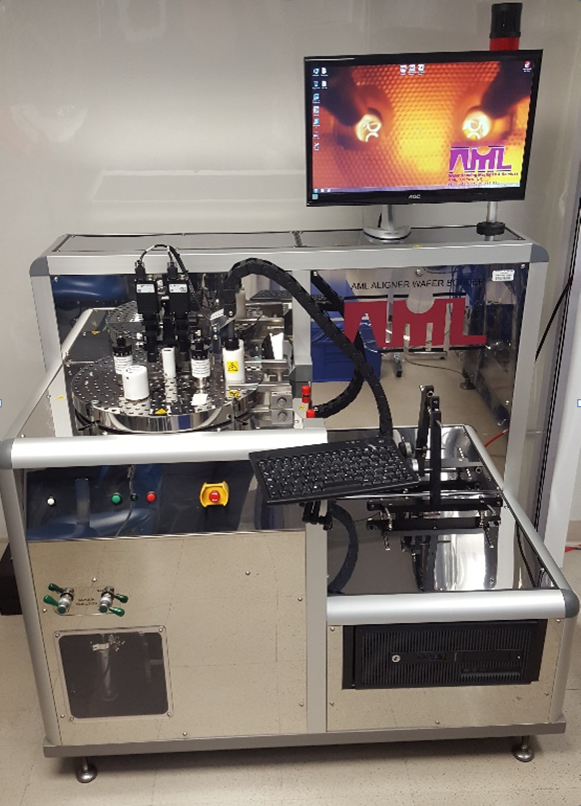
Wafer Bonder with In-situ Alignment
The AML-AWB Aligner- 4” Wafer Bonder platform is a unique automated In-situ alignment system (X, Y, Z & θ) controlled by a PC and DAQ. The system comes with 1-5 micron accuracy depending on options & wafers. This machine is capable of many applications; for instance, High Voltages up to 2.5KV, Temperatures up to 560 oC, Forces up to 25,000N. This system is also equipped with and external dry pump for vacuum up to 10-6 mBar range and forced nitrogen cooling. 3” to 8” wafers (Depending on model chosen) high accuracy optical alignment. Small sizes can be bonded with lower accuracy mechanical alignment.
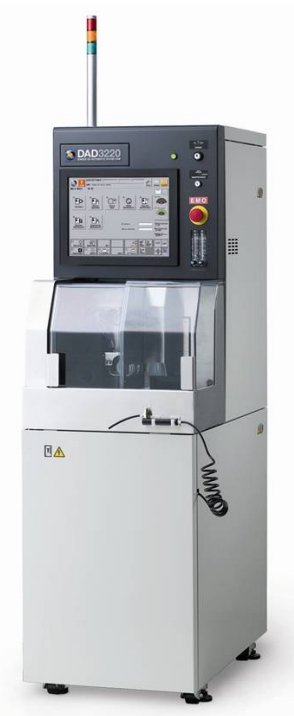
Semiautomatic Dicing Saw (DISCO DAD3220)
Precise spindle dicing saw capable of separating die from silicon and quartz wafers
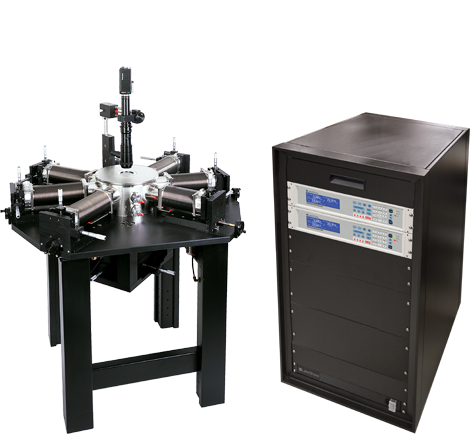
Wafer Level Cryogenic Probe Station
Lake Shore’s Model FWP6 probe station is designed for large-size wafer vacuum probing. The FWP6 accommodates wafers up to 102 mm (4 in) in diameter and can be modified to accept up to 152 mm (6 in) wafers. This probe station is designed for inertial sensor characterization tests over a wide range of environmental conditions and a continuous refrigeration system for wafer cooling. The station is configurable with up to six thermally anchored micro-manipulated probe arms and is optimally designed for electro-optical testing.
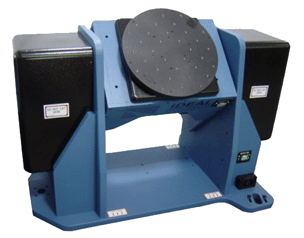
Two-Axis Position and Rate Table System (Ideal Aerosmith 2102)
The Aerosmith dual axis rate table is used for testing multi axes MEMS based inertial sensors in angular rotation and acceleration. The angular rate of up to 1000 deg/sec is possible for the inner axis and up to 300 deg/sec for the outer axis with the rate accuracy of ±0.01%. The controlled rate and acceleration is provided by a servo-controlled system including direct-drive DC torque motors, precision optical encoders, and the Ideal Aerosmith AERO 822 Digital Controller. Remote control from computer interface with the Ideal Aerosmith Table Language (ATL) is possible as well as local front control for this system.
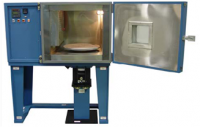
Temperature Controlled Rate Table System (Ideal Aerosmith 1291BR)
The Ideal Aerosmith 1291BR rate table capable of various computer programmable operational modes (constant rate and acceleration, sinusoidal rotation, externally specified motion). The 1291BR provides 0.01% rate accuracy and has been interfaced with a thermal chamber that allows testing of devices through a -65 to 150 °C controllable temperature range. Applications:* Rate characterization of MEMS devices
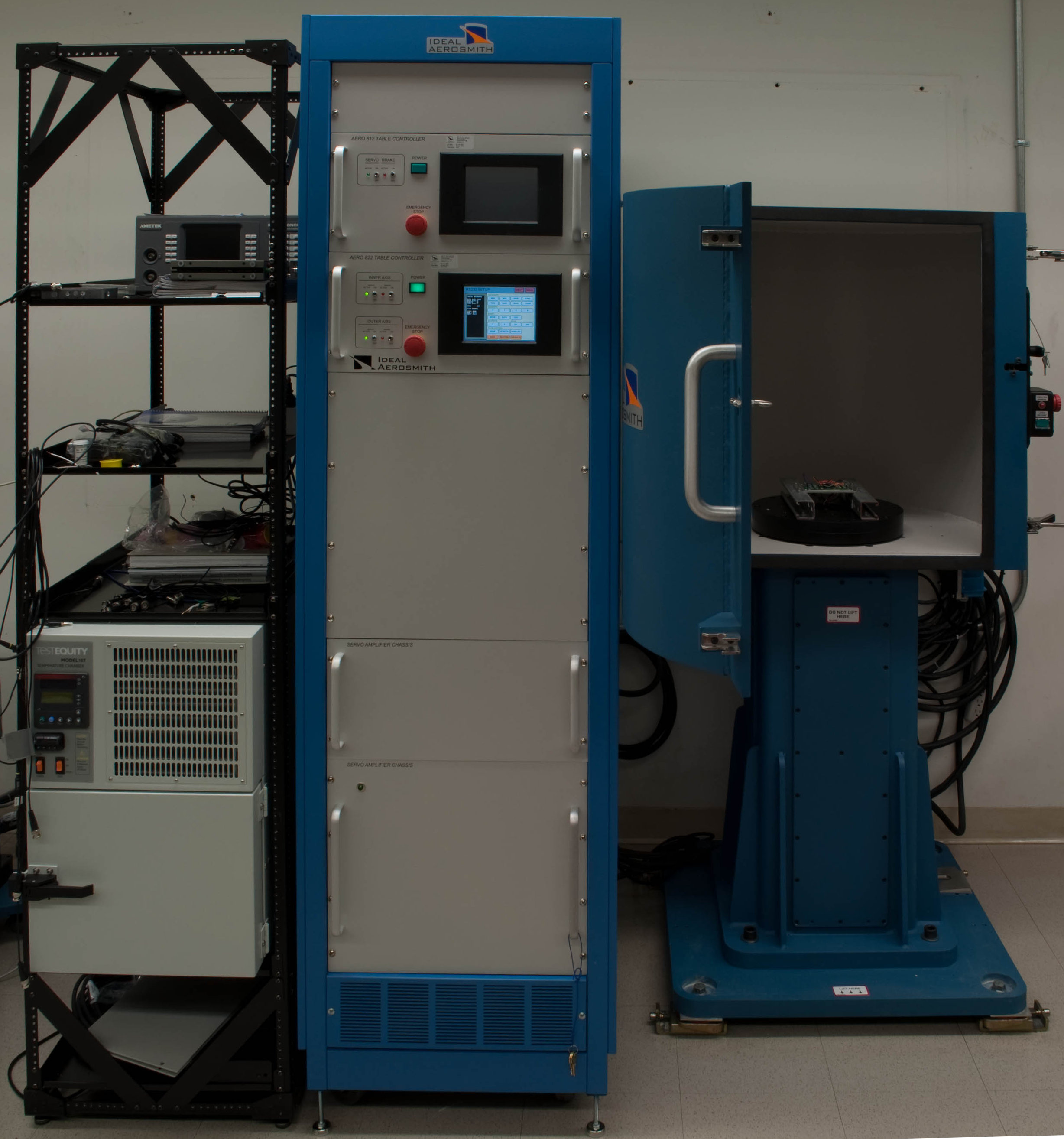
High-Speed Position and Rate Table System (Ideal Aerosmith 1571)
Ideal Aerosmith Centrifuge system is used to apply a controlled centrifugal force in the range of G force to the inertia sensors. The Ideal Aerosmith 1571 High-Speed rate table ,with safety enclosure and ±0.01% rate accuracy and ±36 arcsec absolute accuracy in position, is used for precision high –velocity testing of vacuum packaged inertia sensors. The maximum angular rate 18,000 deg/sec (50 Hz or 3000 RPM) is possible for testing MEMS based devices. Accurate motion control is provided by a direct-drive DC brushless motor, precision optical encoder and a microprocessor in the horizontal single-axis version of rate table model 1571. The AERO 812 Controller front panel is integrated for local and remote control of the table. It is programmed with the Ideal Aerosmith Table Language (ATL) for remote operation through a computer interface.
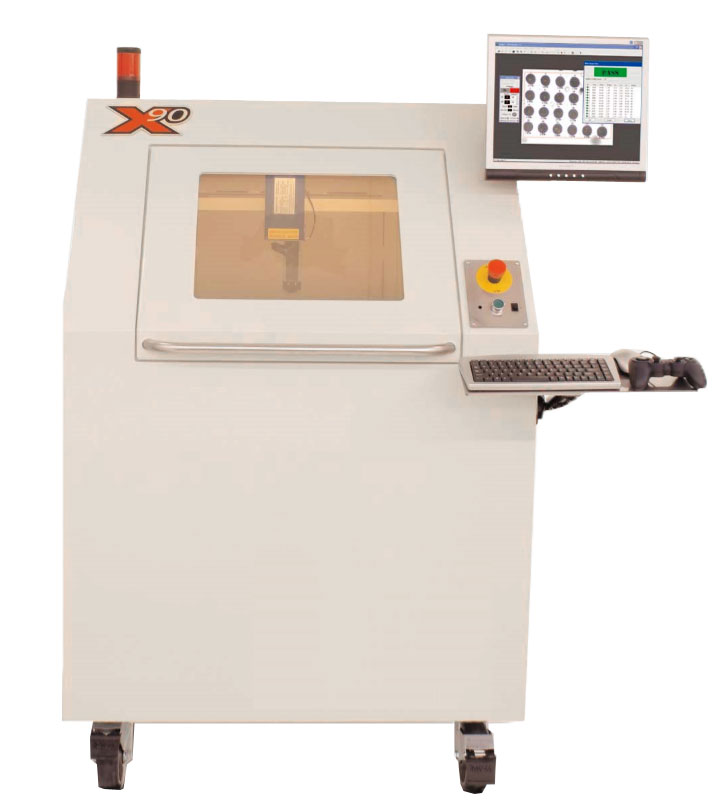
X-RAY Imaging SYSTEM (X90)
The X90 is a high resolution, real time x-ray systems with Xvu image enhancement measurement, and archival system software and simple use. The X90 is configured to optimally x-ray our samples for failure analysis, release quality, quality assurance and process verification. Angular viewing of the components can be achieved by the 3 axis joystick control of the internal tray table (X-Y-Z Rotation/Tilt). The software allows for Image processing and inspection of the measurement.
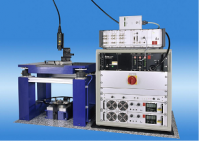
Vertical High Frequency Primary Calibration System (SPEKTRA SE-09)
The system uses a laser vibrometer to accomplish absolute calibration of vibration transducers and sensors. The result of calibration is the transfer coefficient or its level in dB and a statement of its range of uncertainty. A high-frequency, air-bearing vibration exciter with vibration isolators is used to achieve the high performance and low levels of uncertainty. The system has capability of vibration excitation in transversal direction for cross-axis calibration.
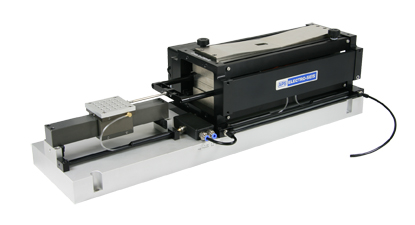
Horizontal Vibration Exciter (APS 500)
The APS 500 ELECTRO-SEIS® Long Stroke Shaker is a force generator specifically designed to be used for calibration and evaluation of accelerometers and other motion transducers. It provides excellent properties for low frequency excitation of such devices. This model has a horizontal air bearing table coupled to the driver unit that allows payloads up to 3 kg.
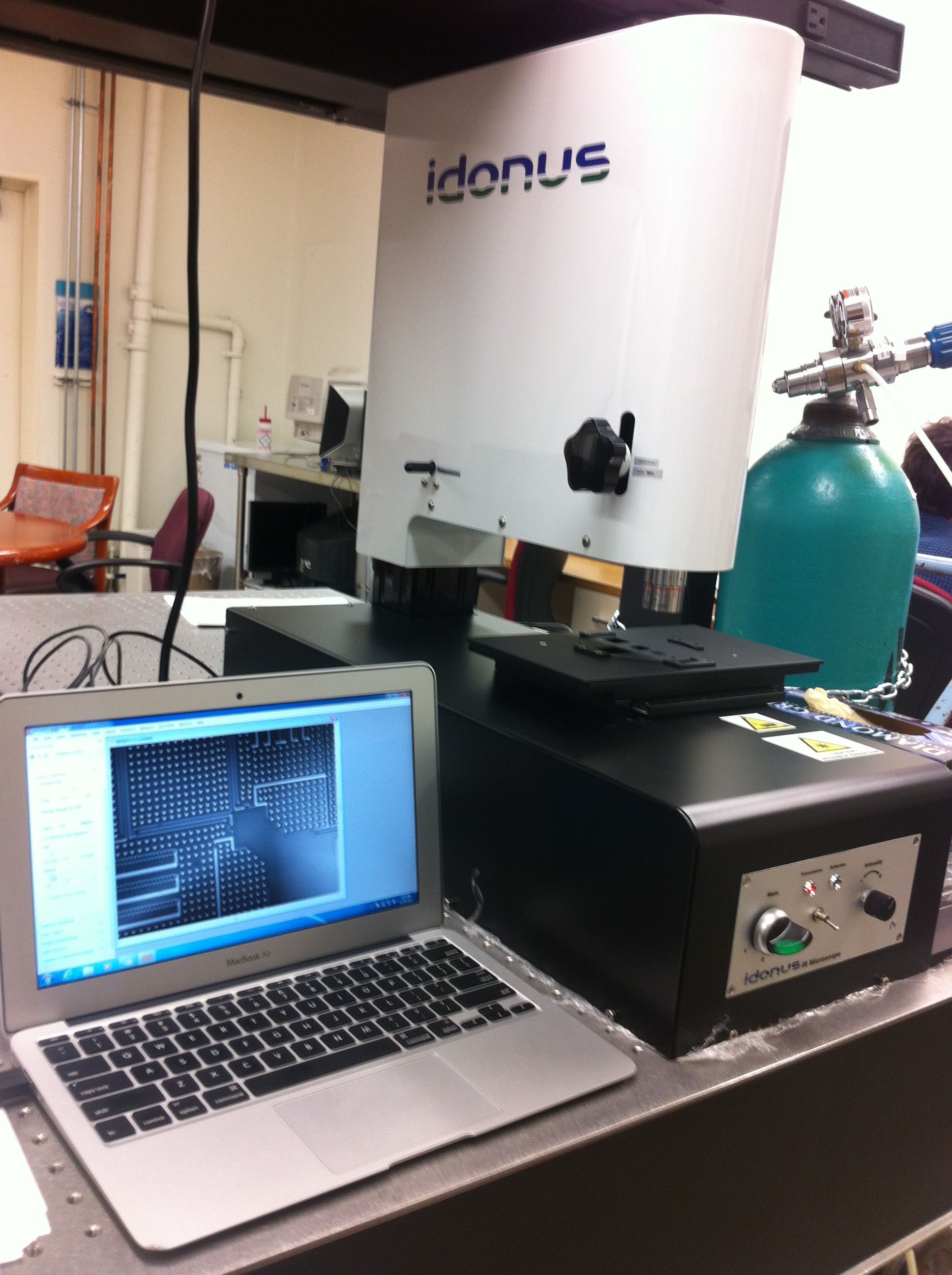
IR-Light Wafer Inspection Microscope
The microscope is equipped with a long working distance objective. A 3 step zoom allows the user to choose the right field of view and magnification. An IR sensitive camera displays the image of the inspected device via USB on your computer. The resolution is better than 3 µm with a 5x objective.
Additionally, a top side illumination is available. This allows to use the microscope in a conventional mode and to inspect the top side of the wafer. The IR microscope is equipped with a xy-table, which accommodates 8” or smaller wafers. The table is motor driven and can be controlled with a joystick.

HF2LI Lock-in Amplifier
The Zurich Instruments HF2LI is a digital lock-in amplifier covering the frequency range between 0.7 μHz and 50 MHz. The HF2LI combines analog front-end circuits for signal sampling and 128-bit digital signal processors. The HF2LI is delivered with 3 programming interfaces. It features 2 physical input optimized for low noise operation with the sampling rate of 210 MS/s. The HF2LI generates 2 high-frequency outputs as a linear combination of up to 6 sinusoidals in the range from DC to 50 MHz. The HF2LI provides 6 dual-phase demodulators with signal bandwidths from 80 μHz to 200 kHz. Applications: * Characterization and testing of inertial MEMS sensors
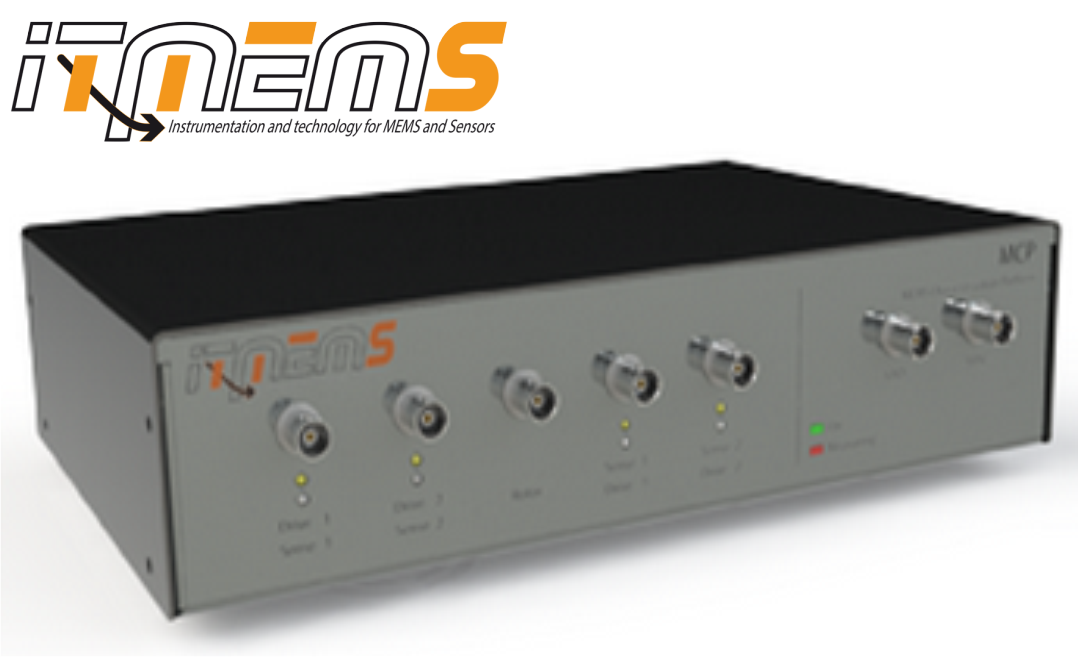
MEMS Characterization Platform (iT MEMS)
MCP, (MEMS Characterization Platform), is a single instrument for device characterization. It allows accurate stationary and dynamic characterization of electrical and mechanical parameters of capacitive MEMS devices, provides fundamental information about the true behavior of MEMS (such as resonance frequency, quality factor, rest capacitance and the pull-in/pull-out voltage). The system can be used for initial validation of theory, behavioral modeling simulations, and finite-element models (FEMs) of MEMS devices. This platform characterizes from probe level to package sealed devices, from small to large-quantity, to report the performance, yield, aging, and reliability of the devices
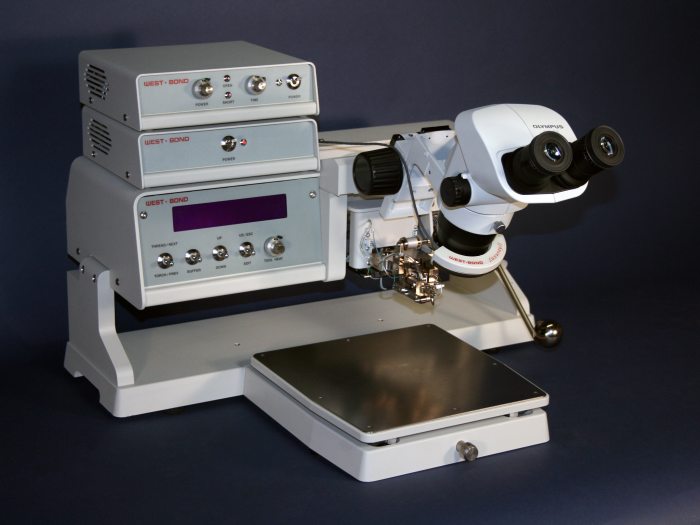
WestBond Gold/
Aluminum Wire Bonder
A WestBond model 747677E is used for both gold-ball bonding and aluminum-wedge bonding to package sensors. With programmable bond parameters and compatibility with gold and aluminum wire, versatility of this tool allows for packaging of nearly any device. Applications: * IMU and inertial sensor packaging
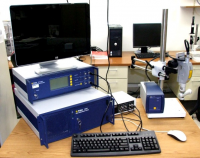
Modular Laser Vibrometer (Polytec OVF)
The OVF Modular Laser Vibrometer system by Polytec is available for non-contact vibration analysis of out-of-plane motion for MEMS or other microstructures regardless of the sample size. This type of interferometer utilizes the Doppler effect to acquire the characteristics of mechanical vibrations or transient motion processes. The velocity and displacement amplitude information of a vibrating object is recovered from frequency or phase modulation of the laser light due to the Doppler effect. The system comprises a vibrometer controller, optics and decoder modules.
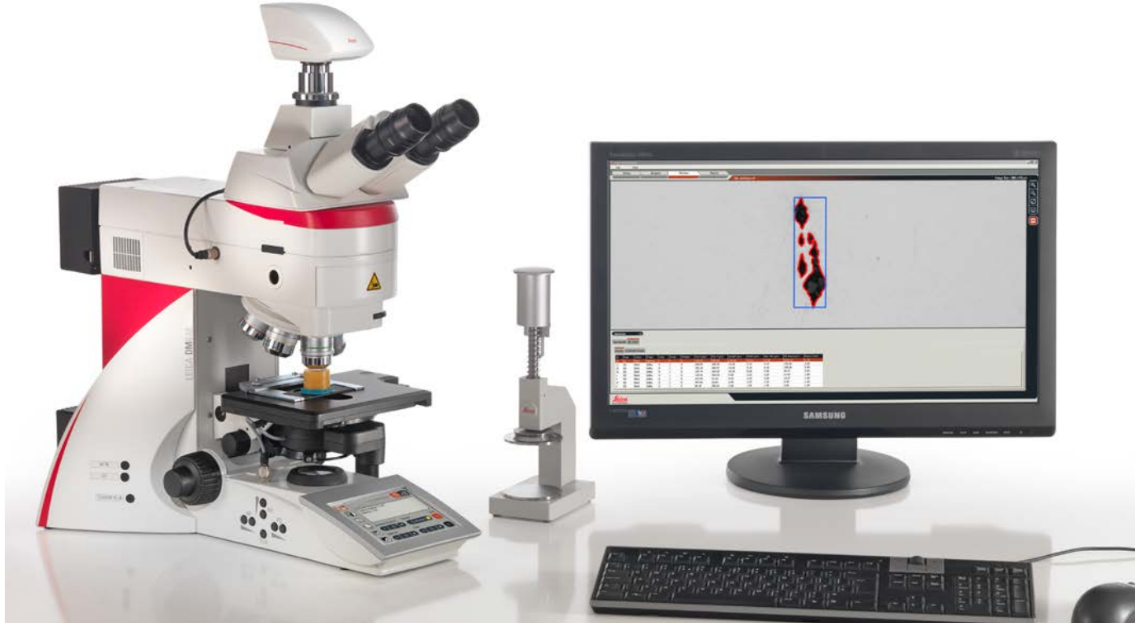
Motorized stage Microscope (Leica DM4 B)
The Leica DM4 B with a motorized stage, coded nosepiece and a digital display is a microscope system, designed for microscopy examinations in laboratory and research environment. The imaging system includes high magnification objectives (up to 100X) and a low magnification panorama objective (1.25X) for a wide view. Various contrast modes are available, including brightfield, high-definition darkfield, and differential interference contrast for highlighting even the smallest scratches or defects. Leica Application Suite (LAS) software platform integrates the microscope, software, and camera for an image analysis. (LAS) software includes Multifocus and Multistep Image Stitching Modules.
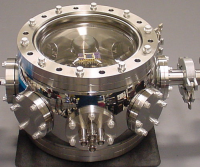
Multiport Vacuum Chamber
A custom, multiport vacuum chamber with electrical feed-throughs has been developed and interfaced with a turbo vacuum pump package that allows for PID controlled pressures from 2 Torr to 0.01 mTorr. Applications: * Testing of packaged devices
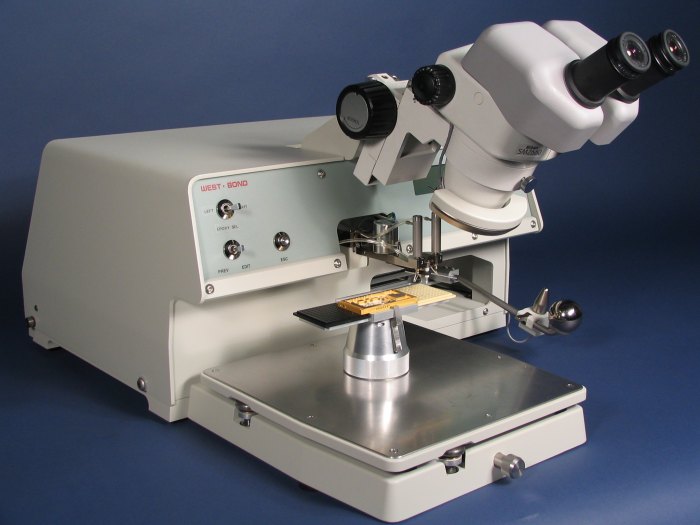
WestBond Epoxy Die Bonder
The WestBond model 7201-CR die-bonder is equipped with a rotating triple-head containing two epoxy dispensing needles and a vacuum pick-up tool. A servo is coupled to the vacuum nozzle to allow for easy alignment of flip-chip dies to inertial sensors. Utilizing a sealing epoxy in the second reservoir, packages can also be hermetically sealed with the same tool. Applications: * Flip-chip packaging and die-attachment
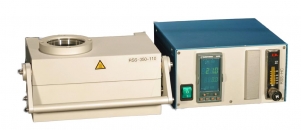
UniTemp Vacuum Furnace
The UniTemp RSS-450-110 vacuum oven is capable of PID-controlled temperature profiles for solder-attachment of sensors to external packages under vacuum. Equipped with a Pfieffer HiCube vacuum pump, packaging is performed at millitorr levels to enable high-Q operation of inertial sensors. Applications: * Vacuum sealing and die-attachment of high-Q devices
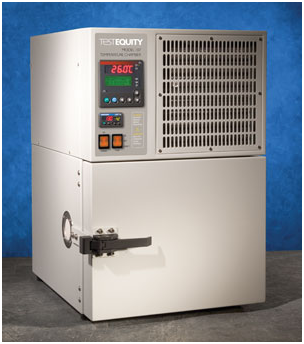
Benchtop Temperature Chamber (TestEquity 107)
The Temperature Chamber TestEquity model 107 is used to test the MEMS based inertia sensors operation in temperature range down to -42 °C operating on 120 V input. The integrated programmable temperature controller is set to enhance desired set point using five sets of PID controller. The actual temperature of the chamber is read with a 0.1° resolution on LED readout. Two sides access port allow us to pass wires into chamber to the sensor test board. Applications: * Testing of packaged devices
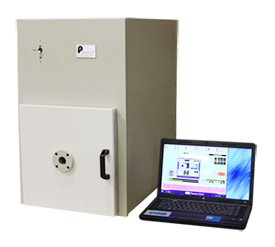
Compact Plasma Etcher (PE-100)
When using the PE-100 as Reactive Ion Etch the electrodes are specially designed for directional plasma, which means the plasma contacts the substrates in a downward flow or drilling effect. This process is primarily used for drilling microvias or cleaning of small variations that are unattainable with chemicals since liquid flow is often restricted in these small spaces.
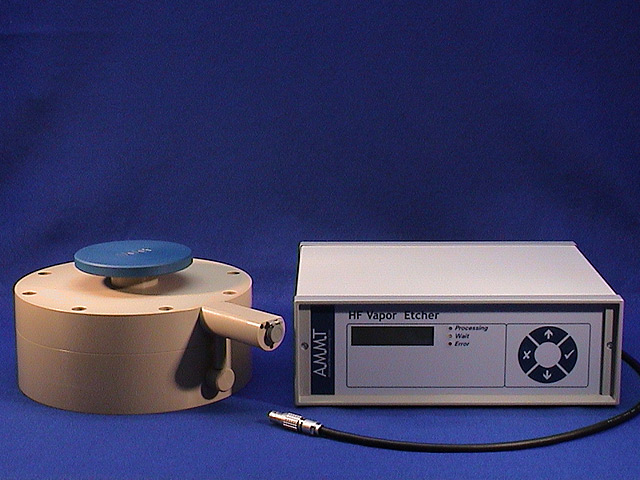
Vapor HF Etcher (AMMT)
An AMMT Vapor HF Etcher is used for in-house vapor HF etching. The surface of the etched sample is exposed to the acidic vapor and heated at a user-controlled temperature. The backside of the sample is sealed to prevent undesired etching of features on the opposite side of the sample. Applications: * Oxide etching during fabrication of IMUs and inertial sensors
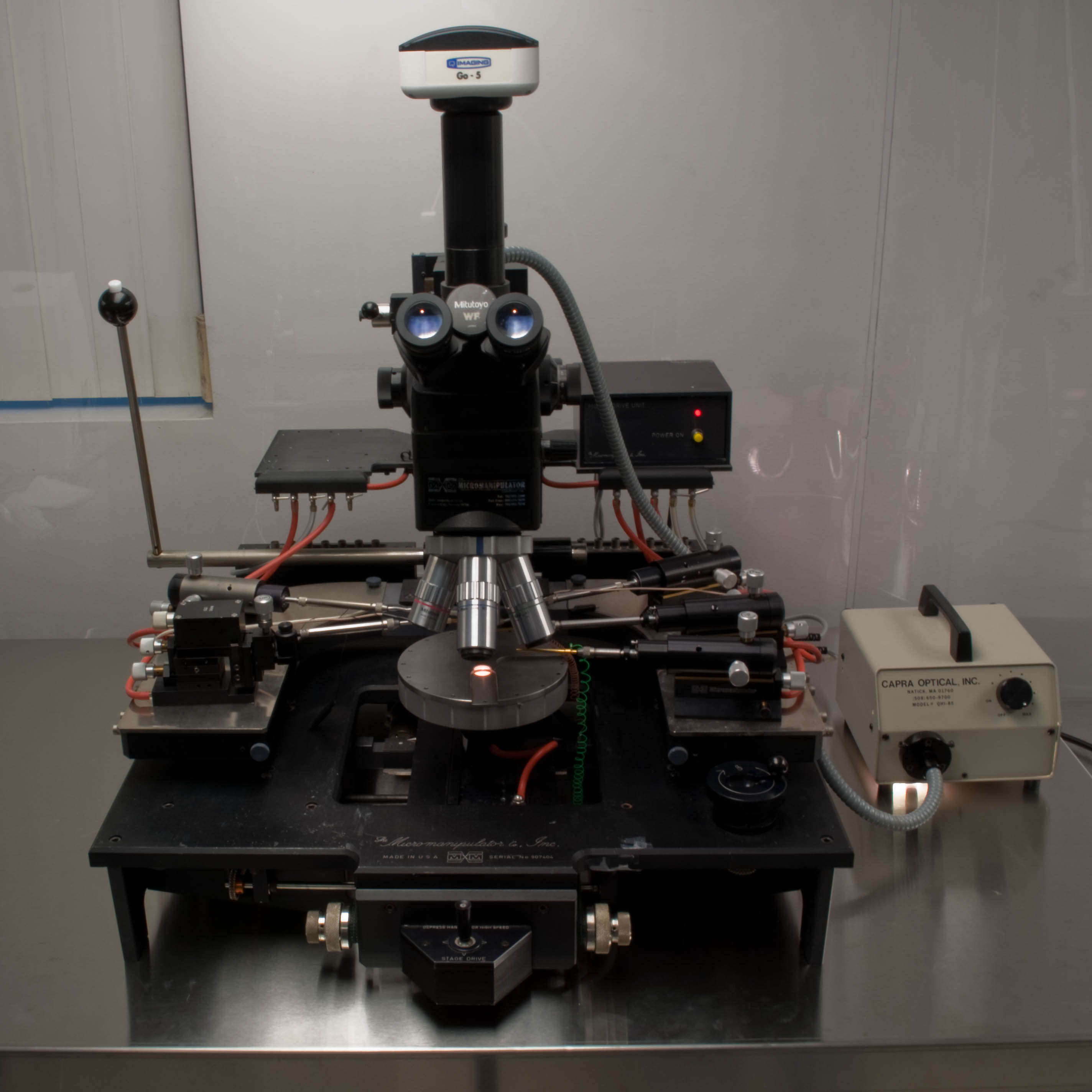
Probe Station
Multiple probe microscope with digital camera. Applications: * Physical manipulation and imaging of devices

Tunable lasers (Toptica: DLpro, 795nm, 780nm)
Toptica tunable lasers are used for characterization of Nuclear Magnetic Resonance Gyroscope.

Custom Made Filling Station for Micro Atomic Vapor Cells for NMR Gyroscope
A special chamber is designed with the capability of generating a vacuum on the level of 1u torr and also providing ports for injecting gasses, and at the same time allowing for wafer-level anodic bonding under these conditions. The chamber incorporates a heater that can heat samples to up to 400°C and a loading mechanism that enables applying a 10N force during the anodic bonding process, while applying a high voltage of 600V across the sample.

5W CW Raman Fiber Laser (IPG Photonics RLP)
5W CW Raman Fiber Laser (IPG Photonics RLP)

4-Layer Mu-metal Magnetic Shield (MS-1 Twinleaf)
Four-layer magnetic shield, Shielding factor: 10^6, Magnetic noise: 16 fT/rt-Hz, Precision printed 3-axis magnetic field coil, Design for high axial Z field uniformity. Internal stage with breadboard hole pattern. Purpose: Characterization of NMR gyroscope cells

Optical Spectrum Analyzer (Agilent 86140B)
The Agilent 86140B is a benchtop optical spectrum analyzer for 50 GHz applications. With the 86140B we can quickly, easily and accurately characterize 50 GHz and wider WDM systems, optical sources and broadband components with its enhanced marker functionality, integrated power measurement capability and fast sweep speed. Purpose: characterize optical sources used in NMR Gyroscope

Optical Pumping Setup (Teachspin)
TeachSpin’s Optical Pumping Lab apparatus allows the student to explore a wealth of atomic physics, including temperature dependent cross-sections for photon absorption, zero magnetic field transitions, spin-spin collision processes, field inversion measurements, Rabi oscillation of the atomic magnetic moment, optical pumping times, and other atomic physics experiments
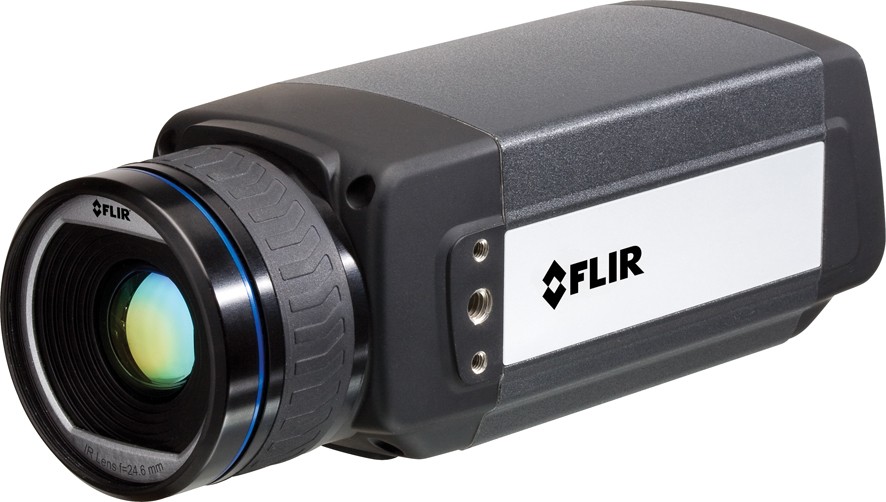
FLIR A655sc
This FLIR A655sc high-resolution Infra Red (IR) camera is equipped with cutting-edge functionality that quantify over 300,000 pixels of accurate temperature measurement data; visualize heat patterns, leakage, dissipation; as well as other heat related factors on electronic components, PCBs and other equipment. Capable of processing in real time, it can be remotely controlled and record thermal snap-shots and videos, measure temperature from over 300,000 spots, create temperature verses time plots, and more. It also provides up to 200 Hz windowing modes and digital control of image flow and recording. 640 × 480, 17 micron pixel detector provides great image detail and small spot size for small temperature anomalies. The additional 50 micon and 100 micon lens allows close-up viewing.
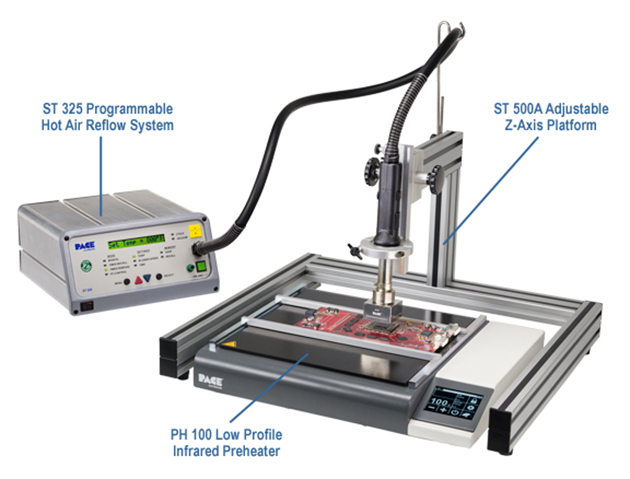
Self-Contained Convective / Hot Air Station (Pace ST 925)
The ST 925 features a self-contained convective/hot air SMT rework station that is fully programmable and can be used to remove and install surface mount components. From the front panel, the system can be used in either manual or “timed” modes. Applications: remove and install surface mount components for PCB assembly
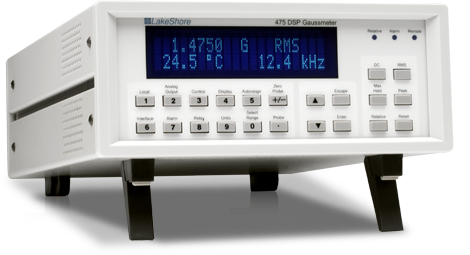
Precision Gaussmeter (Lakeshore 475 DSP)
Model 475 DSP, is a high precision gaussmeter. It ranges from 35 mG to 350 kG (3.5uT-35T), with a high speed data transfer that enables the DC, RMS, and peak measurement modes. This tool is essential tool for application with high magnetic field sensitivity. The ( 1.5 diax100 mm ) probe makes is more convenient to work with micro devices applications.
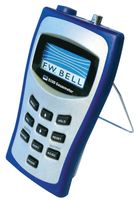
Portable Gaussmeter (5170 FW Bell)
This portable gaussmeter incorporates the use of digital signal processing technology. F.W. Bell’s Dynamic Probe Correction allows measurements from 0 to 20 kG with a basic accuracy of 1%. IT also allows the user to select Gauss, Tesla or Ampere/Meter readings. Built-in software eliminates the need for complex calibration procedures.
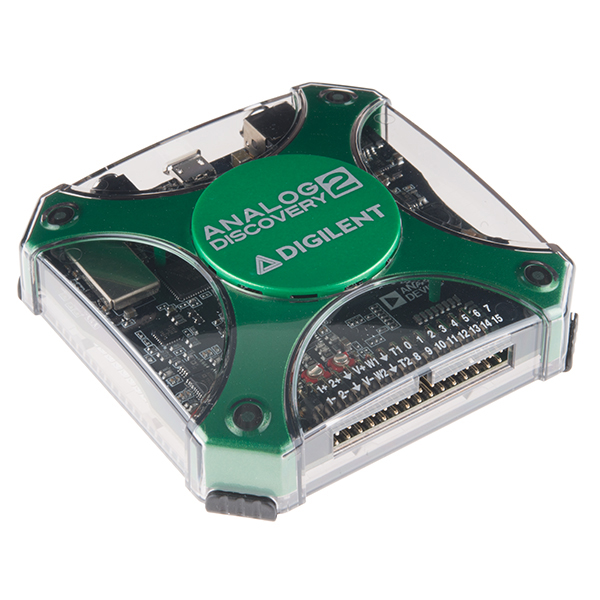
Analog Discovery 2
Digilent Analog Discovery 2 is a USB oscilloscope and multi-function instrument that allows users to measure, visualize, generate, record, and control mixed-signal circuits of all kinds. Applications: Characterization of Devices.
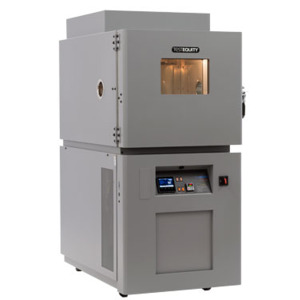
TestEquity TE-1007H Temperature/Humidity Chamber
The TestEquity TE-1007H Temperature Humidity Chamber is a cutting-edge environmental testing solution designed for precise and reliable testing of materials, components, and devices under varying temperature and humidity conditions. With a spacious internal capacity and advanced control system, this chamber offers exceptional uniformity and stability in temperature and humidity control. Its user-friendly interface allows for easy programming and monitoring of test parameters, ensuring accurate and repeatable results.